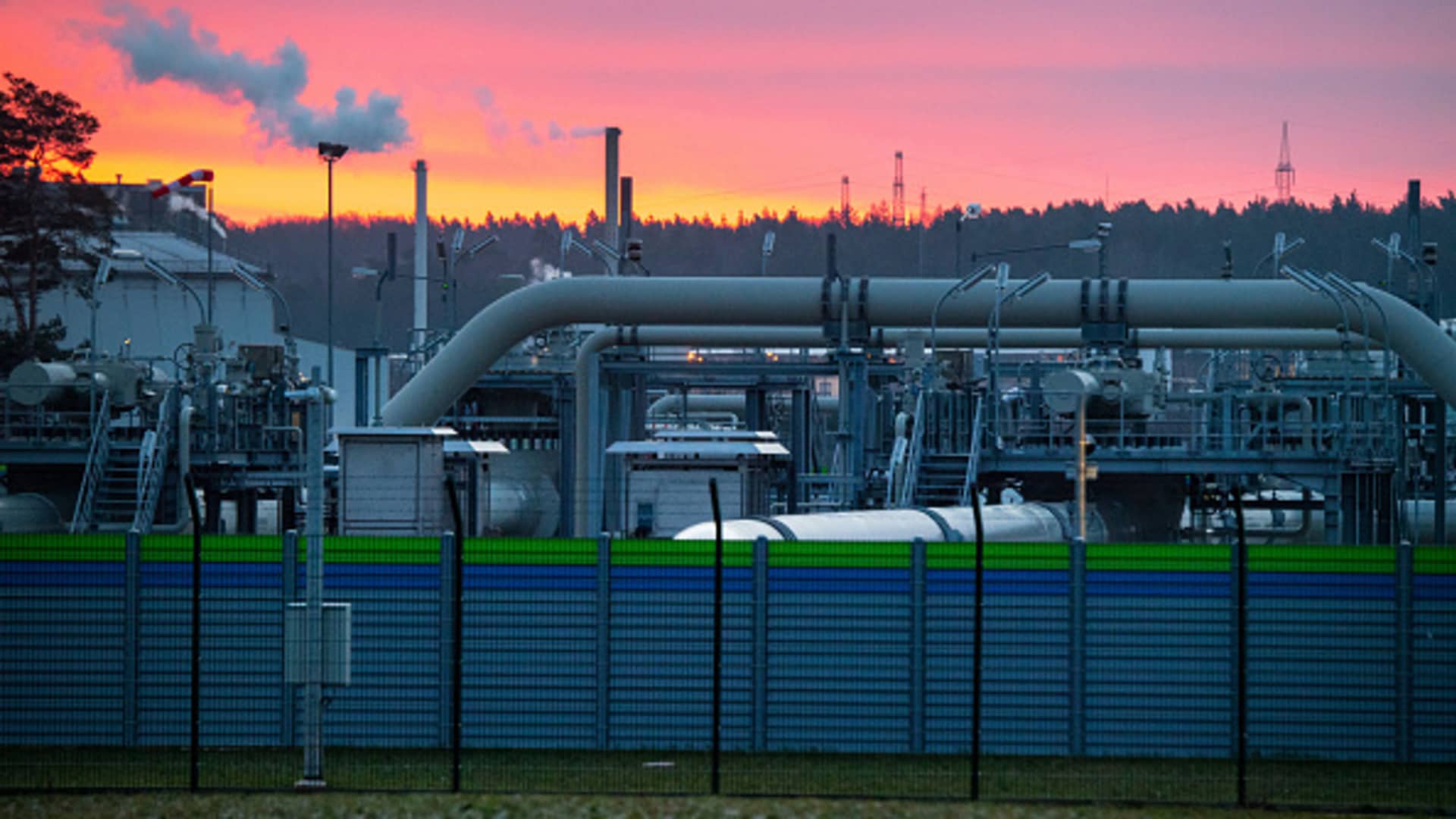
View of pipe systems and shut-off devices at the gas receiving station of the Nord Stream 2 Baltic Sea pipeline.
Stefan Sauer | picture alliance | Getty Images
Investigations are taking place into unexplained leaks affecting both the Nord Stream 1 and 2 pipelines, which bring natural gas from Russia to Europe via the Baltic Sea.
Neither pipeline was pumping gas at the time of the leaks: Nord Stream 1 stopped pumping gas to Europe “indefinitely” earlier this month, with Moscow’s operator saying international sanctions on Russia prevented it from carrying out vital maintenance work.
related investing news
The newer pipeline Nord Stream 2, meanwhile, has never officially opened as Germany refused to certify it for commercial operations due to Russia’s unprovoked invasion of Ukraine.
Both Europe and Russia have both said sabotage cannot be ruled out for the cause of the damage, but the finger of blame is being pointed at Moscow — which is yet to directly respond to the accusations.
For its part, Russia’s state-owned gas giant Gazprom declined to comment on the leaks when approached by Reuters while Nord Stream AG, the network operator, said in a statement reported by Reuters that “the destruction that occurred on the same day simultaneously on three strings of the offshore gas pipelines of the Nord Stream system is unprecedented.”
“It is not yet possible to estimate the timing of the restoration of the gas transport infrastructure,” it added.
Asked about the damaged pipelines earlier, the Kremlin’s spokesman said the leak was cause for concern and sabotage was one possible cause but said it was “premature” to speculate before the results of an investigation.
“No option can be ruled out right now,” Kremlin spokesman Dmitry Peskov told reporters.
Nord Stream released a statement on Monday noting that dispatchers of the Nord Stream 1 control center had “registered a pressure drop on both strings of the gas pipeline” with the reasons being investigated, although it’s not known whether this incident is connected.
‘Severe’ safety hazard
Analysts say the leaks represent a massive “safety and environmental hazard” and maritime authorities with oversight over the affected area are scrambling to ascertain the extent of the problem.
Danish and Swedish authorities declared a no-shipping zone around the location of the suspected leak in their maritime zones while Denmark raised its power and gas safety alert level, Reuters reported earlier Tuesday.
The leaks will scupper any remaining expectations that Europe could receive gas via Nord Stream 1 before winter, analysts noted.
Henning Gloystein, director of energy, climate and resources and senior analyst Jason Bush, both at Eurasia Group, said in a note Tuesday that while German and Danish authorities said the cause of the leaks was unknown, “unplanned leaks to undersea pipelines are rare as they are designed to avert accidental damage.”
“Several EU sources said sabotage seemed likely. Neither pipeline was delivering commercial gas at the time of the leaks, yet given both lines were still pressured and each has the capacity to pipe around 165 million cubic metres of methane-heavy gas per day,” they said, adding: “Leaks of this size are a severe safety and environmental hazard, especially should Russia not stop pumping gas into the system.”
“Depending on the scale of the damage, the leaks could even mean a permanent closure of both lines,” Eurasia Group added.
On Friday, Russian energy supplier Gazprom said it would not resume its supply of natural gas to Germany through the key Nord Stream 1 pipeline, blaming a malfunctioning turbine.
Hannibal Hanschke | Reuters
The Nord Stream gas pipelines have become a focal point for tensions between Russia and Europe in recent months, with Russia accused of weaponizing gas supplies to its neighbor in a bid to gain sanctions relief.
Over the summer, Gazprom announced a sporadic stop of gas flows to Europe, citing the need for maintenance to the pipeline (analysts said the stopping of flows was designed to put pressure on Europe to cave on sanctions). Flows have now stopped altogether via the Nord Stream 1 gas pipeline, again after Gazprom said sanctions prevented maintenance being carried out, a claim widely debunked by experts in the gas industry and Siemens, which has provided and maintained equipment.
Timothy Ash, a senior emerging markets sovereign strategist, said the allegations that Russia could be behind the damage were “remarkable.”
“So a number of holes appeared in these pipelines, which are thick and buried deep. This has to be subs, likely Russian subs,” he said in an emailed note, adding that it would be “incredible” if Russia was found to have been willing “to cause such risks to shipping in the Baltics.”
Russia has yet to directly respond to accusations that it was behind the damage to the pipelines.
Benchmark European gas prices climbed Tuesday with Dutch TTF gas futures rising by over 8% to 208.44 euros a megawatt hour.



